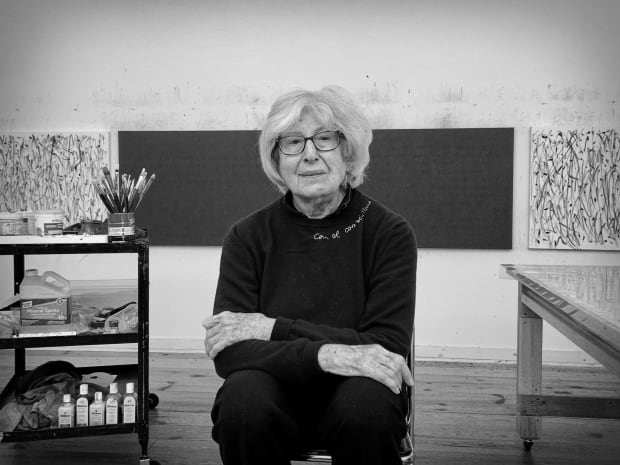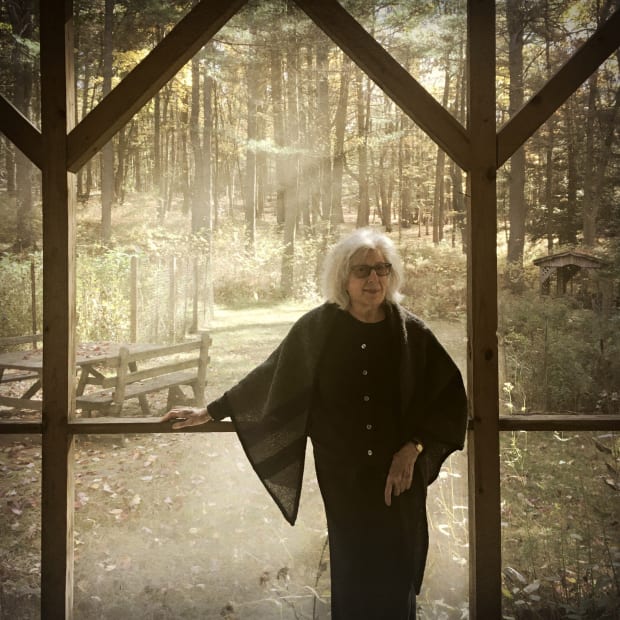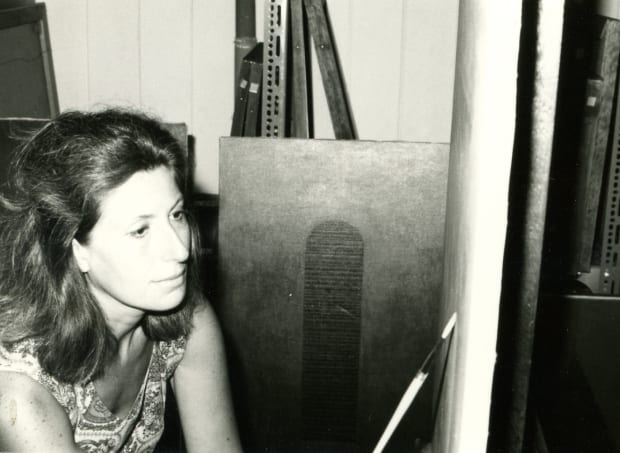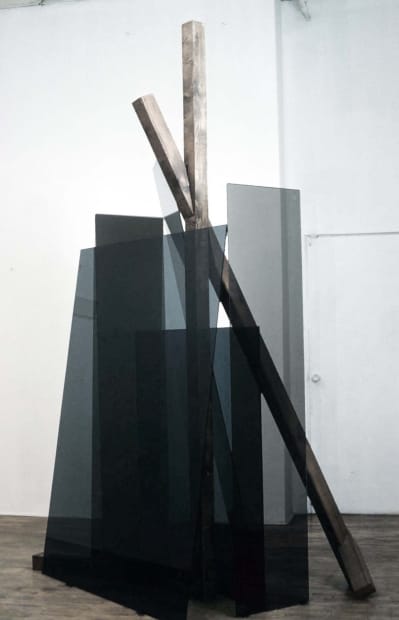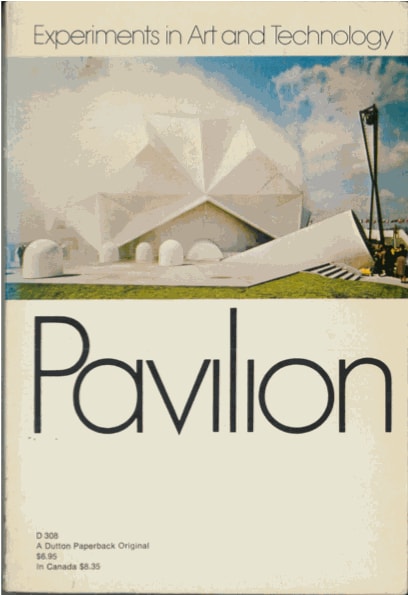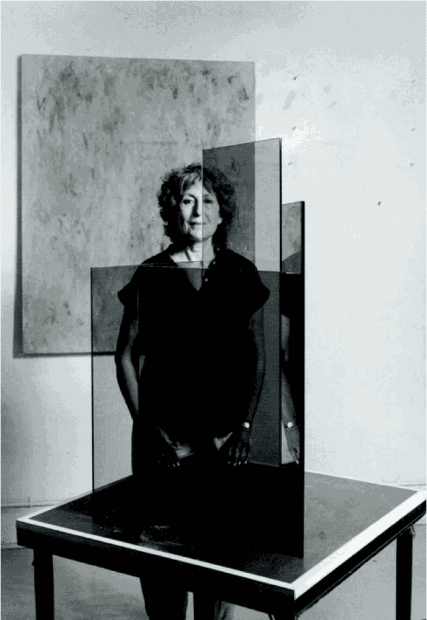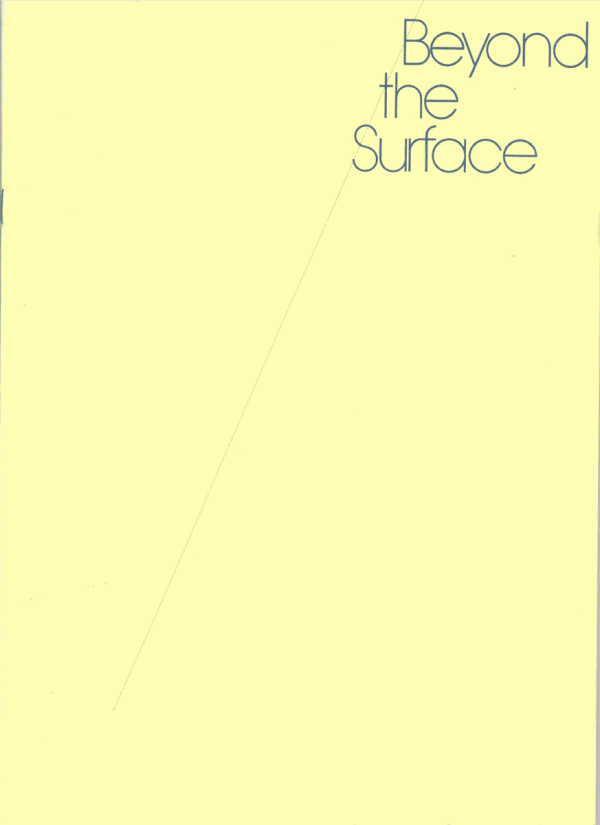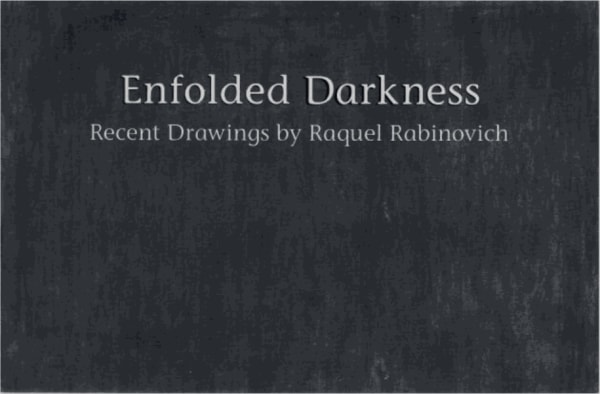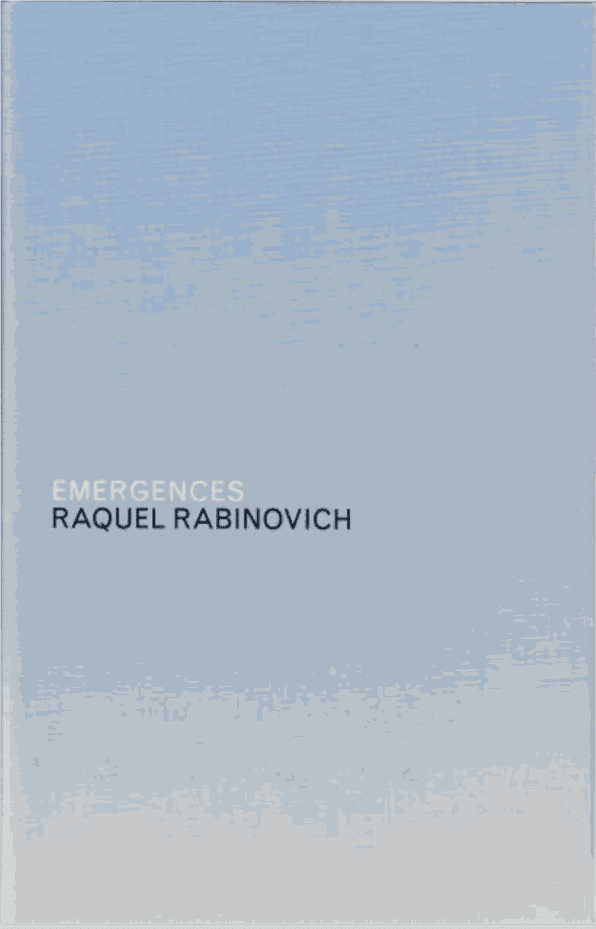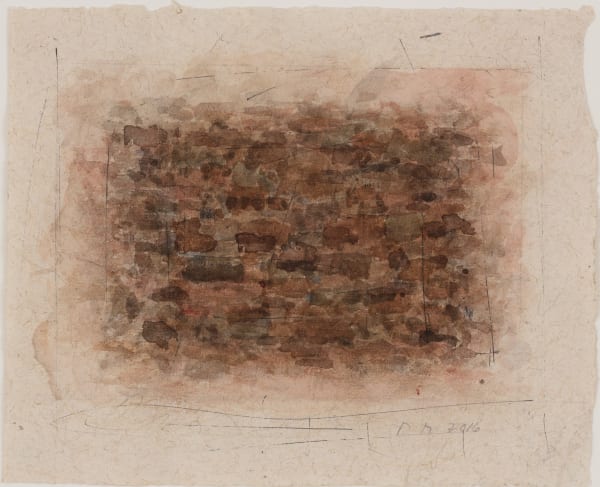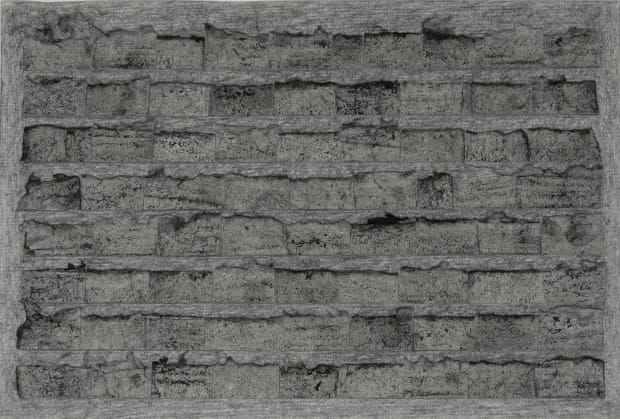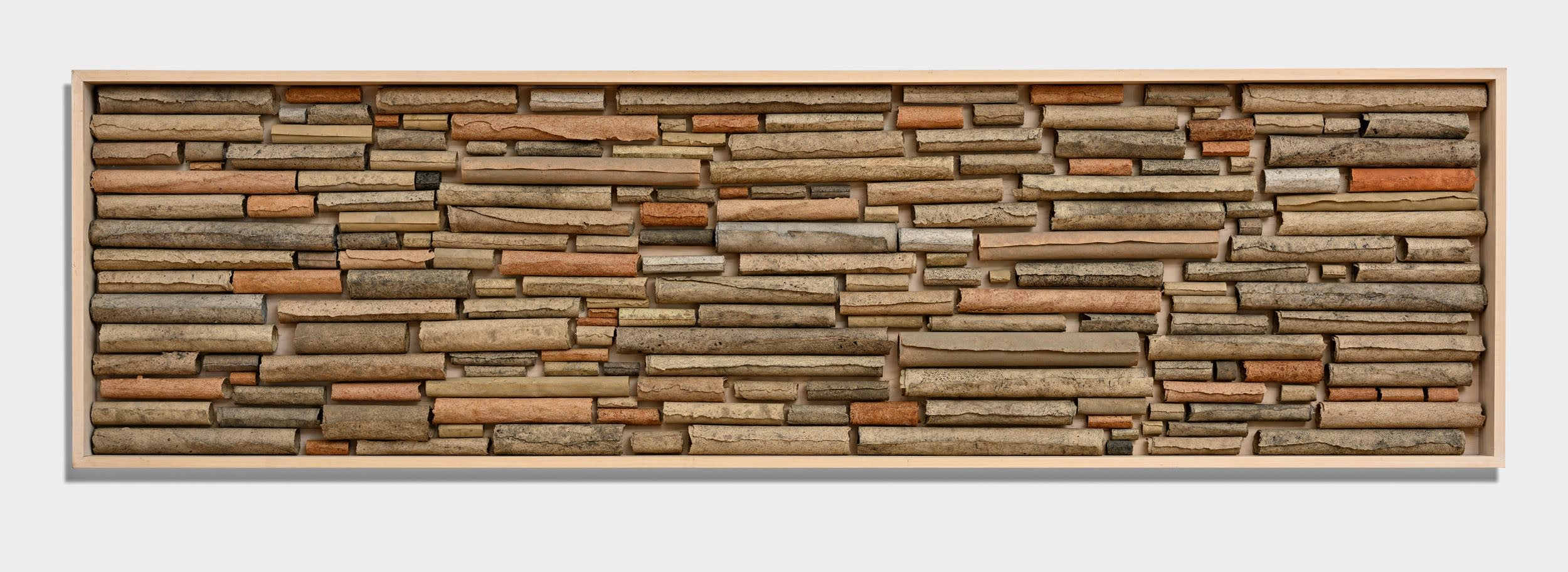-
 Raquel Rabinovich in her Rhinebeck, NY Studio, 2022
Raquel Rabinovich in her Rhinebeck, NY Studio, 2022 -

Raquel Rabinovich in her Rhinebeck, NY Studio, 2016. Photographed by Mariana Eliano
-

Raquel Rabinovich, Rhinebeck, NY, 2019
-
“Rabinovich's method is humble—one stroke next to another, in pastel, charcoal, and manganese powder on paper—but her aspiration is great: to enact and make visible the secret process of becoming, which always begins in the dark. With inspired patience (alchemists say that patience is the ladder, and humility the key to their garden), she continuously works the ground. These drawings are abstract in the original sense of drawing away, from the visible to the invisible. How does she know when to stop? 'I know that a painting is finished,' she has said, 'when the ground becomes groundless and the surface dissolves into that groundlessness.' Drawing away from the all-consuming pandemonium of colorful images that surrounds us outside, these densely layered works draw us into the dark, where we might begin again, to see.”
-David Levi Strauss -

The Dark Is Light Enough 8, 1963, Oil on linen
-
Raquel Rabinovich speaking about "The Dark Is Light Enough"
Hear Audio On VimeoOriginal audio excerpt from the 2/22/2002 recording of Jung, Art & the Alchemical Imagination with Ann McCoy and Gary Bobroff, Founder of JUNG Archademy
-

Raquel Rabinovich in her studio in Huntington, New York, 1968
-

Agnes Denes, Wheatfield - A Confrontation: Battery Park Hill (Aerial View), 1982, Two acres of wheat planted and harvested by the artist on the Battery Park landfill, Manhattan, Summer 1982
© 1982 by Agnes Denes -

Gasaki, 1987, Grey and bronze tempered glass and wood, 120 x 60 x 57 in
-

Cover of Pavilion: Experiments in Art And Technology (1972)
-

Rabinovich in her Tribeca loft, New York, 1987. Photographed by Peter Bellamy
-
Cloister, Crossing, Passageway, 1.32
Site-specific sculpture installation 3/8” grey tempered glass and silicone adhesive 108” high x 400” long x 72” wide'Cloister, Crossing, Passageway, 1.32' is a deceivingly simple glass installation, from which complexity emerges. The work makes references to metaphysical, symbolic, architectural, and mathematical worlds. It is an invitation to perceive new realms of meaning. The piece is about a certain vision where we can look at the world from the inside and outside at the same time.
The transparency of the glass acts as a metaphor for a space that is simultaneously accessible and inaccessible, open and enclosed, tangible and intangible, private and public, visible and invisible.
- Raquel Rabinovich, (statement revised, 2010)
-
Installation views, Graduate Center Mall, City University of New York, NY, September 14 – October 17, 1978, Later exhibited at The Jewish Museum Sculpture Court, New York, NY, April 9 - Summer 1979
-
At CUNY Graduate Center Mall on 42nd Street I did my first large glass installations: 'Cloister, Crossing, Passageway, 1.32'....I would make a maquette, a scale model, and then a glass factory would fabricate the big panels in scale, temper them, and ship them to the site of the installation, where, with the help of assistants, I would assemble the glass panels together, using silicone, an adhesive....[The title implied] an enclosed space, geometry, crossings, passageways....One point three two, is a mathematical proportion, which I used [to connect the different glass panels], like it wasn't accidental this length with that length. They were all connected mathematically. It was a time when I became very interested in the Fibonacci series and sacred architecture.
-Raquel Rabinovich (source: AAA interview) -
Point/Counterpoint
Robert Moses Plaza at Lincoln Center, New York, 1985 3/8" bronze tinted tempered glass and silicone adhesive, 102" h x 210" l x 120" w'Point/Counterpoint' is an outdoor installation of bronze tinted glass. I am interested in how the dark but transparent glass walls open up a space where reality and illusion intertwine in a continuous flow. In this space we can at once be both observers and participants. This work was destroyed by Hurricane Gloria on September 26, 1985 and was re-built in October. In between, I created a one-day installation on September 27, titled, Raquel Rabinovich and Hurricane Gloria, a collaboration. This new installation included the remnants of the broken glass on which I placed a scale model of the original work, and the following statement: 'When cities, buildings, and monuments are consumed by time, they slowly become ruins, and deterioration is a gradual historical process. When a catastrophe strikes, destruction takes place suddenly. There is no deterioration, no process, and no history. What we have is an instant ruin.'
- Raquel Rabinovich on Point/Counterpoint
-
Past Exhibitions and Publications
-

Raquel Rabinovich, Drawings: 1978-1995
INTAR Gallery 1996 Read the Brochure here -

Raquel Rabinovich: Invisible Cities 1986, Sculpture and Drawings
Bronx Museum of the Arts December 1986- February 1987 Read the Brochure Here -

Beyond the Surface: Recent Works by Creus, Rabinovich, and Sutil
Americas Society April-July 1990 Read the Brochure here -

Raquel Rabinovich, The Dark Is The Source Of Light
1996 view the publication here (amazon) -

Enfolded Darkness: Recent Drawings by Raquel Rabinovich
Trans Hudson Gallery 1998 Read the Brochure here -

Raquel Rabinovich: Light Unworn
Trans Hudson Gallery December 2000 - January 2001 Read the brochure here -

Emergences: Raquel Rabinovich
Hudson River 2002 Read the Brochure Here -

Anthology of the Riverbeds
2008Read The Publication Here -

Raquel Rabinovich: Excerpts
Pratt Institue 2017 Read the Brochure here -

Raquel Rabinovich: The Reading Room
Vassar College 2018 Read the Brochure here
-
-
Raquel Rabinovich on using stone
March 2021Raquel Rabinovich describes viewing stone temples in India, inspiring her to work with the material in this video conversation with American artist, educator and art critic Ann McCoy.
-
Pabhavikas
Site specific stone sculpture installations, Rhinebeck, NYPabhavika is a Pali word that means arising, emerging from, a constant state of emergence. Pabhavikas is a series of 20 site-specific stone sculpture installations I created in the wooded area of my property in Rhinebeck, NY. The sculptures seem to emerge from the ground and merge with the trees, the earth, the sky, the autumn leaves, the winter snow, the sounds and the silence of nature.
- Raquel Rabinovich
-
 Raquel Rabinovich, "Pabhavikas 19," 1999-2000 Field stone 2 x 30 x 15 in. Photo Courtesy of Douglas Baz
Raquel Rabinovich, "Pabhavikas 19," 1999-2000 Field stone 2 x 30 x 15 in. Photo Courtesy of Douglas Baz -
 Raquel Rabinovich "Pabhavikas 1," 1995-96 River split stone 3 x 13 x 32 in. Photo Courtesy of Douglas Baz
Raquel Rabinovich "Pabhavikas 1," 1995-96 River split stone 3 x 13 x 32 in. Photo Courtesy of Douglas Baz -
Emergences
Emergences is a series of stone sculpture installations I created in site-specific locations along the shores of the Hudson River. They exist in a continual state of flux, being gradually concealed and revealed with the daily rising and falling of the river tides. They constantly emerge and submerge in and out of view. At high tide the sculptures are concealed, covered by the waters. It takes six hours for them to be gradually revealed until they are in full view at low tide. Then it takes another six hours for the sculptures to gradually submerge until they are completely out of view at high tide. While some pieces disappear from view entirely to eventually become an invisible presence under the waters of the river, new pieces come into existence. Stones are repositories of history. Their layering in my sculptures suggests geological and cultural times. They evoke the history of the earth and the stages of life, and function as metaphors for the passage of time and the ephemeral nature of existence.
– Raquel Rabinovich
Images © Doug Baz, 2002
-
Emergences
Filmed by Camilo RojasEmergences is a series of stone sculpture installations that Raquel Rabinovich created and Camilo Rojas documented in site-specific locations along the shores of the Hudson River. At high tide the sculptures are concealed, covered by the waters. Over a six hour cycle the waters recede and the sculptures are gradually revealed, becoming visible at low tide. Then another six hour period begins in which the waters rise and the sculptures slowly become invisible, until they are concealed again at high tide. They merge with their surroundings and shift with the ever-changing currents of the waters, the weather, and the seasons. Like the river itself, the sculptures are never the same. Like life, they are impermanent and exist in a perpetual state of flux. Stones are repositories of history. Their layering in the sculptures suggests geological and cultural times. The sculptures evoke the history of the earth and the stages of life. They function as metaphors for the passage of time and the ephemeral nature of existence.
-

-
Sculpture and Dance Collaboration
2013Emergences exists in a constant state of flux, being gradually concealed and revealed with the daily rising and falling of the river tides. They constantly emerge and submerge in and out of view. Ancestral stones and flowing waters are in an ongoing conversation. Rabinovich’s sculptures evoke the history of the earth and the stages of life. They function as metaphors for the passage of time and the ephemeral nature of existence. Emergences, Lighthouse Park was created in 2012, and on September 14th at 3:30 pm, 2013 Julie Manna engaged in a poetic dialogue with the installation through dance. Dance unfolding into sculpture. Sculpture embracing dance. Merging, submerging, emerging…
-
Photography courtesy of Camilo Rojas
-
Sculpture and Dance Collaboration
2013This video by Camilo Rojas documents the sculpture and dance collaborations between Raquel Rabinovich and Julie Manna, Hudson River, 2013.
-
Literature and Language
Works in series such as 'When Silence Becomes Poetry' are...dedicated to poets I love and feel deeply connected to. The drawings are not illustrations of poems, but rather my visual response to the language of poetry, a language which transcends the physicality of words. Some of the poets included in that series are Federico García Lorca, Rainer Maria Rilke, Jorge Luis Borges, St. John of the Cross, Pablo Neruda and T.S Elliot.
- Raquel Rabinovich -
When Silence Becomes Poetry
-
 Raquel RabinovichWhen Silence Becomes Poetry 1: for Ann Lauterbach, 2017Colored pencils on paper8 1/4 x 11 in
Raquel RabinovichWhen Silence Becomes Poetry 1: for Ann Lauterbach, 2017Colored pencils on paper8 1/4 x 11 in
21 x 27.9 cm -
 Raquel RabinovichWhen Silence Becomes Poetry 1: for Robert Kelly, 2015Watercolor and pencil on Indian paper7 x 9 in
Raquel RabinovichWhen Silence Becomes Poetry 1: for Robert Kelly, 2015Watercolor and pencil on Indian paper7 x 9 in
17.8 x 22.9 cm -
 Raquel RabinovichWhen Silence Becomes Poetry 3: for Ann Lauterbach, 2017Colored pencils on paper8 x 11 in
Raquel RabinovichWhen Silence Becomes Poetry 3: for Ann Lauterbach, 2017Colored pencils on paper8 x 11 in
20.3 x 27.9 cm -
 Raquel RabinovichWhen Silence Becomes Poetry 3: for Robert Kelly, 2015Watercolor and pencil on Indian paper7 x 9 in
Raquel RabinovichWhen Silence Becomes Poetry 3: for Robert Kelly, 2015Watercolor and pencil on Indian paper7 x 9 in
17.8 x 22.9 cm
-
-

Across the Perilous Line 20, 2000, Graphite, charcoal wash and pastel on Nepalese paper, 21 x 33 in.
-
Literary References
Noted by Rabinovich, a number of authors and writers inform her practice-

Jorge Luis Borges
Short story writer, essayist, and poet Jorge Luis Borges was born in 1899 in Buenos Aires, Argentina. Borges grew up speaking English and Spanish, and at the age of 15, he moved to Switzerland with his family, where he studied French and Latin and taught himself German. Well-read and well-traveled, the multilingual Borges transformed tales from the Old World into the new.
-

Italo Calvino
Italian novelist, short story writer, and journalist Italo Calvino was born in 1923. Calvino planned on studying agronomy at the University of Turin, but his first year was quickly interrupted by World War II and the German invasion of Italy. Calvino fought as a partisan for two years and wrote for a local communist party newspaper. Most of his early work reflected on these wartime experiences, however, as his work transitioned from realism to folktales, fantasy, and allegory, Calvino became one of the most important Italian fiction writers of the twentieth century.
-

Ann Lauterbach
Ann Lauterbach studied literature at the University of Wisconsin, Madison and Columbia University on a Woodrow Wilson Fellowship. She has authored ten poetry collections and has taught at Brooklyn College, Columbia University, the Iowa Writer’s Workshop, Princeton University, and the City College of New York. She is currently the Schwab Professor of Languages and Literature at Bard College and co-Chair of Writing in their MFA Program.
-

Albrecht Dürer
An icon of German Renaissance art, Albrecht Dürer studied nature and the human form to revolutionize printmaking, create scientific illustrations in watercolor, and design large-scale altarpieces. The artist traveled from his home in Nuremberg, Germany, across the Alps, and into Venice in the late 1490s and early 1500s. During his trips, he drew inspiration from classical antiquity and contemporary humanism.
-

Adrienne Rich
Writing through the feminist and civil rights movements of the 1960s and 1970s, poet and essayist Adrienne Rich explored themes such as identity, sexuality, and women’s liberation. After marrying and becoming a mother to three, Rich’s work grew more confrontational and decidedly political. Rich published two dozen volumes of poetry and nine of prose, addressing misogyny, racism, and the Vietnam War, and cementing herself as one of the most important public intellectuals of the twentieth century.
-

Edgar Allen Poe
A master of short stories and literary theory, Edgar Allen Poe transformed American and international literature. His melancholic, melodramatic storytelling inspired contemporary horror, science fiction, and detective fiction. His most famous poem, “The Raven,” was published in 1845 and deals with the grief and tragedy of lost love.
-

George Quasha
As a poet, writer, musician, and artist, George Quasha uses language, sculpture, sound, installation, and performance to explore the relationship between art and poetry. Born in White Plains, New York in 1942, Quasha now lives in Barrytown, New York, where he runs Station Hill Press, a publisher of experimental poetry and prose.
-

Robert Kelly
Robert Kelly is an American poet born September 24, 1935 in Brooklyn, NY. He was associated with the deep image group. Kelly has published more than fifty books of poetry and prose, including Red Actions: Selected Poems 1960-1993 (1995) and a collection of short fictions, He also edited the anthology A Controversy of Poets (1965). He is the 2016-2017 Poet Laureate of Dutchess County.
-
-
The Dark is Light Enough
Christopher Fry (1954)Rabinovich's inspiration for her painting series "The Dark is Light Enough" stems from a 1954 screen play The Dark Is Light Enough by Christopher Fry. Set during the Hungarian Revolution of 1948, and technically a comedy, Fry subtitled the play 'A Winter Comedy' to signal its tragic qualities.
Argentine writer, historian, art critic and curator Damián Bayón sent Rabinovich the first edition of the book:
In Buenos Aires, I began a way of working, which still continues today, that has a lot to do with what I call ‘the dark.’ ... Even the famous phrase that says, ‘If you [can see] the dark, you can see everything.’ It's like a metaphor to see beyond the surface. I can see behind and behind. So that became like a lifelong interest in exploring and inhabiting what is behind appearance, which I still do today with my sculptures, submerging in the water, or the mud I use for works on paper, coming from a dark place you don't see in the riverbed, and on and on and on.
- Raquel Rabinovich
-
Invisible Cities
Italo Calvino (1972)You can read and download Italo Calvo's Invisible Cities hereItalo Calvino's Invisible Cities inspired another one of Rabinovich's drawing series of the same name. The book explores imagination and the imaginable through the descriptions of cities by an explorer, Marco Polo. The book is framed as a conversation between the elderly and busy emperor Kublai Khan, who constantly has merchants coming to describe the state of his expanding and vast empire, and Polo. The majority of the book consists of brief prose-poems describing 55 fictitious cities that are narrated by Polo, many of which can be read as parables or meditations on culture, language, time, memory, death, or the general nature of human experience. Short dialogues between Kublai and Polo are interspersed every five to ten cities discussing these topics. These interludes between the two characters are no less poetically constructed than the cities, and form a framing device that plays with the natural complexity of language and stories. In one key exchange in the middle of the book, Kublai prods Polo to tell him of the one city he has never mentioned directly—his hometown. Polo's response: "Every time I describe a city I am saying something about Venice."
In the mid-'80s, I resonated very much with a book called Invisible Cities, written by Italo Calvino. I even corresponded with him. He lived in Italy. And I got his permission to use passages of that book to inscribe in my drawings, which I did. And so the drawings are called Invisible Cities. I used rubber stamps to hand-stamp some of those passages.
- Raquel Rabinovich (source: AAA interview)
-

When Silence Becomes Poetry 5: for Jorge Luis Borges, 2018, Danube River mud, pencil and glue on Essindia paper,
6 ¾ x 10 inches. Suite of six collages
-
“All artworks are writings, not just those that are obviously such; they are hieroglyphs for which the code has been lost, a loss that plays into their content.”
Theodor W. Adorno
-
River Library
Rabinovich’s interests in rivers and language merge in the series River Library. To create these works, she submerges handmade paper into mud from rivers as near as the Hudson and as far-flung as the Ganges and the Paraná. When dry, she sometimes arranges them into diptychs resembling open codices, or rolls them into scroll-like forms. She has made hundreds of these “drawings” to date, each with a color and quality unique to its source. For Rabinovich, rivers, like stones, are “repositories of history,” containing information about a region’s geology as well as the past and present civilizations that have congregated along their shores. As such, the River Library works function like visual documents that record both natural and cultural history, where mud becomes “the alphabet of a language yet to be deciphered.”
-
Raquel Rabinovich: Excerpts Panel Discussion
Pratt Institute, 2017 -

Raquel Rabinovich at the Ganges River, Varanasi, India, c. 2002. Courtesy of the artist.
-
“River Library is a series of drawings on handmade paper in which I use mud from rivers around the world as my drawing medium. Embodying the history of the earth and humankind, mud functions like the alphabet of a language yet to be deciphered, like a yet unwritten history of nature and culture, like a text that provides a memory of our existence: the drawing is the text and the text is the drawing.”
- Raquel Rabinovich
-
Rivers
Utilized by Rabinovich series such as "River Library"-

River Library 74
Hudson River mud and glue on Essindia paper, 10 x 30 in 2003The Hudson River flows southward from upstate New York’s Lake Tear of the Clouds (in the Adirondack Mountains) to New York City, where it drains into the Atlantic Ocean. Before the 315-mile river was renamed for English explorer and sailor Henry Hudson, the Mohicans called it Mahicannituck, “the river that flows both ways.”
-

River Library 303
Urubamba River mud and glue on Essindia paper, 15 1/2 x 24 in 2003-5The Urubamba River, once known to the Incas as “Willka Mayu” (“Sacred River”), runs northwest across the Andes Mountains in Peru and is a major tributary of the Amazon River. The 450-mile river is divided into the Upper Urubamba, with extensive Incan irrigation systems and ruins—most notably, Macchu Picchu—and Lower Urubamba, which is currently home to many indigenous peoples.
-

River Library 300
Paraná River sediment and glue on Essindia paper, 8 x 45 in 2007-08Flowing southward 3,030 miles through Brazil, Paraguay, and Argentina, the Paraná River ends in the Atlantic Ocean. The Paraná River is the second longest river in South America (about 950 miles shorter than the Amazon River) and its name is an abbreviation of the Tupi phrase, “para rehe onáva,” “like the sea.”
-

River Library 300
Mississippi River mud and glue on Essindia paper, 16 x 22 in 2012-14Stretching from northern Minnesota to the Gulf of Mexico, the Mississippi River is the second-longest river in North America. The 2,320 mile river flows through ten states—Minnesota, Wisconsin, Iowa, Illinois, Missoui, Kentucky, Tennessee, Arkansas, Mississippi, and Louisiana—and drains all or part of a thirty-one states.
-
-
The Poetics of Water (River Library)
10th International Cuenca Biennial, Ecuador, 2009Raquel Rabinovich's River Library is a site-specific sculpture installation and drawings shown at the 10th International Cuenca Biennial, Ecuador, 2009. The Poetics of Water.
The sculpture installation is created using stones found in the four rivers of Cuenca: the Tomebamba, the Yanuncay, the Tarqui, and the Machangara.
The drawings, from the River Library series, are made with sediment from some of the Earth's major rivers. -

Julia P. Herzberg, José Noceda (chief curator of the Wifredo Lam Center, Havana and invited curator of the 10th Cuenca Biennial) Raquel Rabinovich (invited artist from the US), René Cardoso Segarra, President of the Cuenca Biennial (1989-2010).
-

Portrait of the artist. Pencil on paper by Phong Bui, 2014
-
River Library Scrolls
Photos Courtesy of Douglas Baz -
 "River Library Scrolls," 2002-2014. Table installation: 200 scrolls made with mud from rivers from around the world. Each scroll is a rolled and sealed drawing. River mud and glue on Essindia paper. Table: 30 x 91 1/2 x 25 1/2 in
"River Library Scrolls," 2002-2014. Table installation: 200 scrolls made with mud from rivers from around the world. Each scroll is a rolled and sealed drawing. River mud and glue on Essindia paper. Table: 30 x 91 1/2 x 25 1/2 in -
ALBRECHT DÜRER and Melencolia 1
Rabinovich references the work of Albrecht Durer, the German painter, printmaker, and theorist of the German Renaissance in her paintings, Homage to Albrecht Dürer. They are inspired by the enigmatic magic square in Albrecht Dürer's Melancholia 1, a 1514 engraving in which the sum of the inscribed numbers in any direction is 34. Magic squares are ancient symbols of occult or mythical significance and of esoteric spirituality. They imply the combination of numbers that were believed to be the source of the essence of wisdom.
-

Raquel Rabinovich, Temples Of The Blind Windows 8, 1978-1983
Ink wash, charcoal, graphite and rubber stamped black in on paper, 31 x 23 in.
-
Time of the Gazing
Documentary which explores Raquel Rabinovich's work, part of the documentary program series "Learning in Progress," 2000.
-
In the Studio with Raquel Rabinovich
Presented by American Abstract Artists, 2021
Videographer: Christian NguyenIn the Studio with Raquel Rabinovich
Art TalksWatch on YoutubeAmerican Abstract Artist member Raquel Rabinovich shares her inspirations and how poetry and language are woven into her practice. The AAA has produced this short video profile as part an ongoing series of AAA Member Interviews.
-
A film made by Karen Pearson
Join our mailing list
* denotes required fields
We will process the personal data you have supplied to communicate with you in accordance with our Privacy Policy. You can unsubscribe or change your preferences at any time by clicking the link in our emails.

